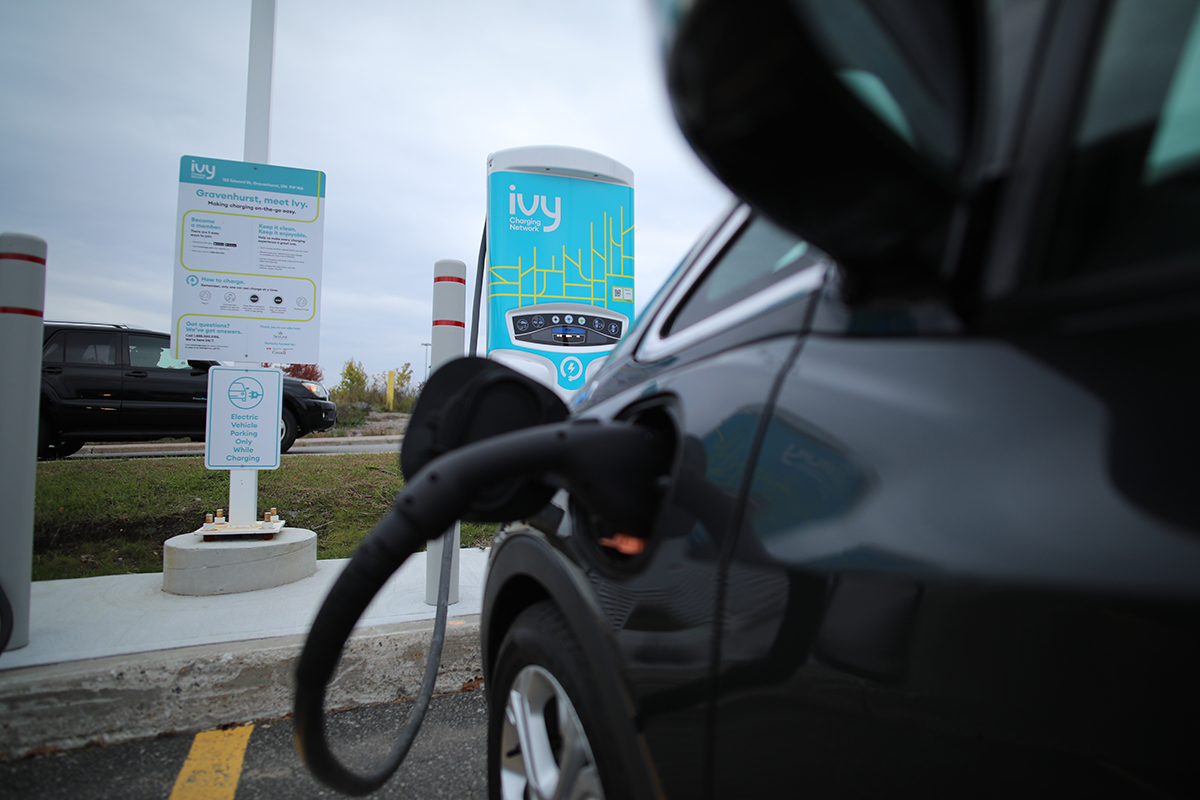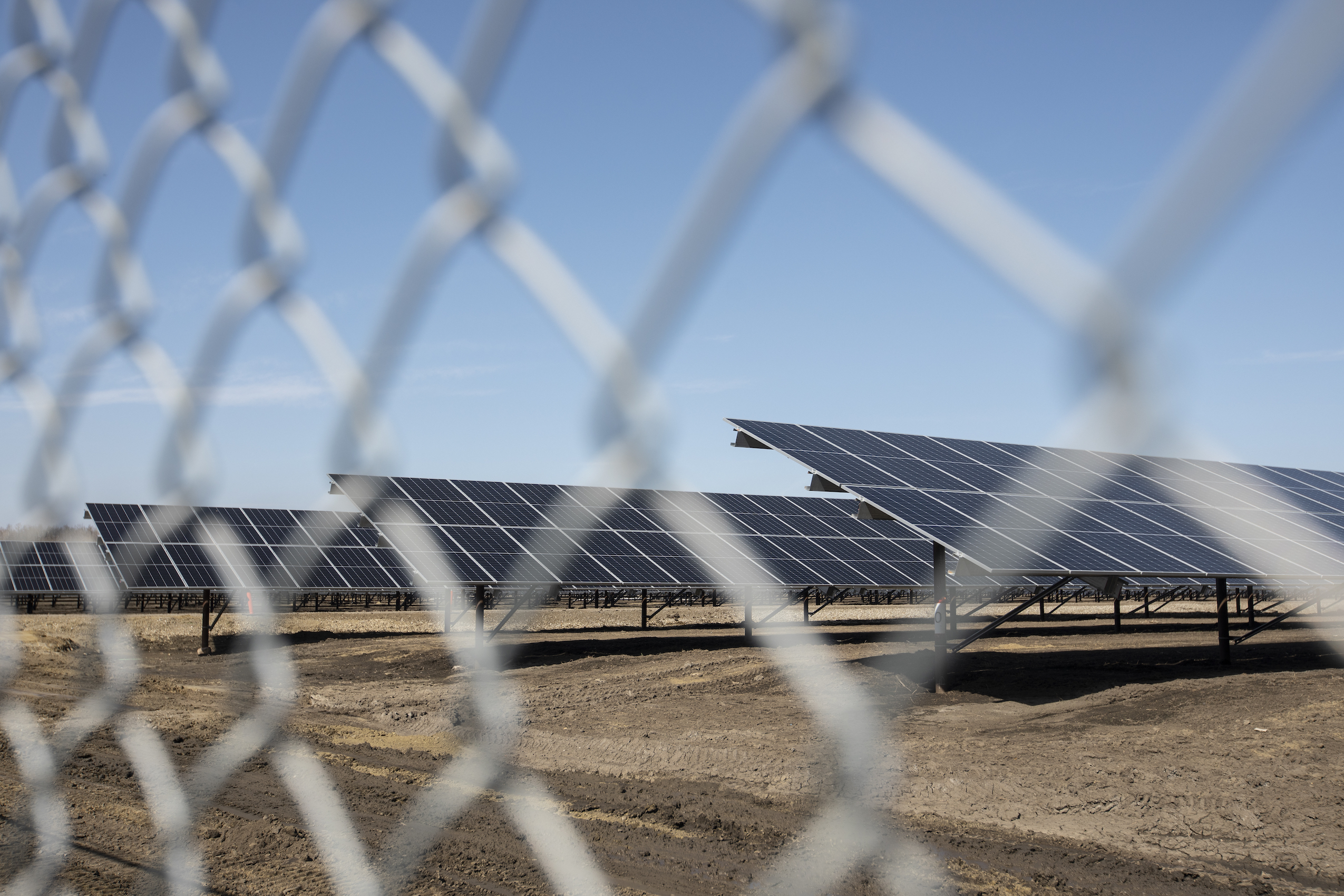
Hope for a huge, ancient and imperilled fish
First Nations are leading efforts to make sure lake sturgeon can find a home in...
Alberta will introduce a new annual tax on electric vehicles, invest heavily in carbon capture and storage and put more work into long-stalled land-use planning across the province. It has also set aside billions of dollars to respond to climate change-fuelled disasters.
That’s according to the latest Alberta budget, unveiled on Feb. 29, which continues to rely heavily on oil and gas revenues for income — the government expects it to account for 24 per cent of all revenue in the 2024-25 fiscal year.
Expenses are up $2.1 billion from the previous year, largely due to $2.9 billion earmarked to deal with droughts, wildfires and floods.
Here’s what the budget means for climate and the environment and where it prioritizes spending.
The government will introduce a $200 annual tax on owners of electric vehicles in 2025, which it argues is justified because those drivers do not pay a fuel tax at the pump. The budget said the amount is generally equivalent to what the annual tax would be for those who buy gasoline. The new tax will be payable every year when renewing vehicle registration.
Across Canada, battery electric vehicles accounted for ten per cent of all new vehicle registrations in late 2023, according to analysis from S&P Global Mobility. According to the Calgary Herald, sales of battery electric vehicles rose nearly 64 per cent in Alberta in 2022.
The federal government announced proposed regulations in December that would require all new vehicles sold to be zero emission by 2035.

The Alberta budget also includes fuel tax relief for drivers, with the price shifting quarterly based on the price of oil: as the price rises, the tax will decrease.
The government said there will be more information on the electric-vehicle tax when legislation is tabled in the fall, but that it does not expect the tax will be reduced based on oil prices. Alberta’s electric vehicle tax follows Saskatchewan, which introduced a $150 “road use fee” for electric vehicle owners in 2021.
Alberta’s new tax is expected to bring in $1 million in its first year and to increase to $8 million by 2026-27. Fuel tax revenue, which goes beyond private automobile use, is expected to be $1.4 billion in 2024-25.
The budget comes one day after the province introduced new rules for renewable energy projects which place potentially severe restrictions on new developments.
Renewable energy gets a small nod in the budget for the investment it has attracted, but there is no mention of the impact of the recent moratorium on new projects, nor any dedicated investment in renewable power.
One focus, however, will be developing what the budget referred to as policies to integrate roof-top solar, battery storage and energy-efficient technologies into the grid “to inform and support Albertans to manage their energy costs and consumption.”
The budget promises to continue a review of Alberta’s transmission policies to take advantage of existing transmission and avoid “costly new builds.” The recent renewables inquiry looked at increasing transmission costs charged to renewable energy producers.
It also highlights investments in natural gas and said the government is “exploring other technologies, with some companies in the very early stages of assessing the feasibility of developing small modular nuclear reactors to supply heat and power in the oil sands sector and Alberta’s electricity grid.”

The Ministry of Affordability and Utilities plans to provide “permanent natural gas price protection through the natural gas rebate program to provide year-round price stability to Albertans from volatile natural gas prices.”
The government has increased funding for land-use planning in Alberta, but the details are unclear. Despite seven designated regions requiring such plans, only two land-use plans have been developed since 2009.
Regional plans are supposed to consider the cumulative impacts of all uses on the land and establish thresholds for sustainability. The South Saskatchewan and Lower Athabasca plans have been completed, but work remains to be done on the remaining five.
In total, $15 million has been set aside to work on new regional plans and to review the two existing plans. That money is a $7.5-million increase and will be spread over three years, funding work toward the creation of five new plans. That doesn’t mean any new plans will be created. Some of the money will be spent on those reviews.
Alberta’s Technology Innovation and Emissions Reduction (TIER) Fund, the provincial carbon price for large emitters, is expected to funnel almost $600 million over the next three years into programs and technologies for reducing emissions.
It’s anticipated at least $167 million of that will be allocated to the Alberta Carbon Capture Incentive Program, on top of $226 million from the previous year. The program aims to “support and accelerate the development of new carbon capture, utilization and storage.”
Starting this year, whenever the emission reduction fund exceeds $100 million, 25 per cent of the excess will be automatically directed to the incentive program, which provides a grant to carbon capture, storage and utilization projects for 12 per cent of eligible capital costs.
The incentive program in Alberta is not yet up and running. The province said it is waiting for more clarity on the federal carbon capture tax credit before it will begin.
There aren’t many highlights for the environment in the budget, but there are some increases in spending.

Overall spending for the Ministry of Environment and Protected Areas is up slightly this year. It will get an additional $27 million over two years for caribou recovery, including replanting of trees on old seismic lines and enhancing reporting and tracking.
There will also be a slight increase in funding for the oilsands monitoring program, which examines the cumulative impacts of the sector, to $54 million — a bump of $14 million over three years.
The government’s 189-page fiscal plan only mentions climate change once, when it refers to Environment and Climate Change Canada, but there is constant reference to its impacts.
Alberta is already facing severe drought conditions, an extension of last year’s dry conditions which helped fuel massive wildfires across the province. The vast majority of increased spending — in a year that forecasts lower revenues and spending restraint — is going toward fighting climate-fuelled crises.
At the same time, investments highlighted in the budget are geared toward items like carbon capture utilization and storage in the oil and gas sector. Tax breaks are slated for natural gas and gasoline consumption, while fees will increase on electric vehicles.
And while the government is investing more money into the Heritage Fund, set up decades ago to accumulate wealth generated by oil and gas for a time when that wealth can no longer be taken for granted, the focus remains on fossil fuels. At the end of the day, Alberta’s budget continues to sink or soar on the price of a barrel.
Get the inside scoop on The Narwhal’s environment and climate reporting by signing up for our free newsletter. Angello Johnson’s shoulders burn, and his arms...
Continue reading
First Nations are leading efforts to make sure lake sturgeon can find a home in...

We’re excited to share that an investigation by The Narwhal is a finalist for the...

A new documentary, Nechako: It Will Be a Big River Again, dives into how two...
